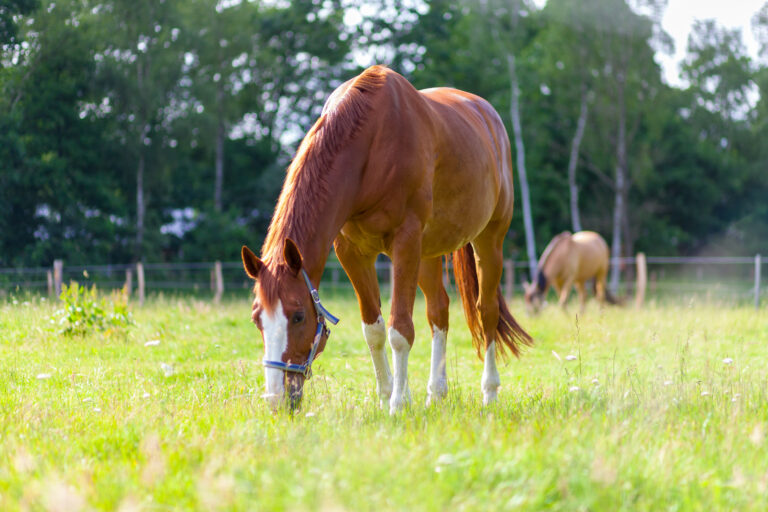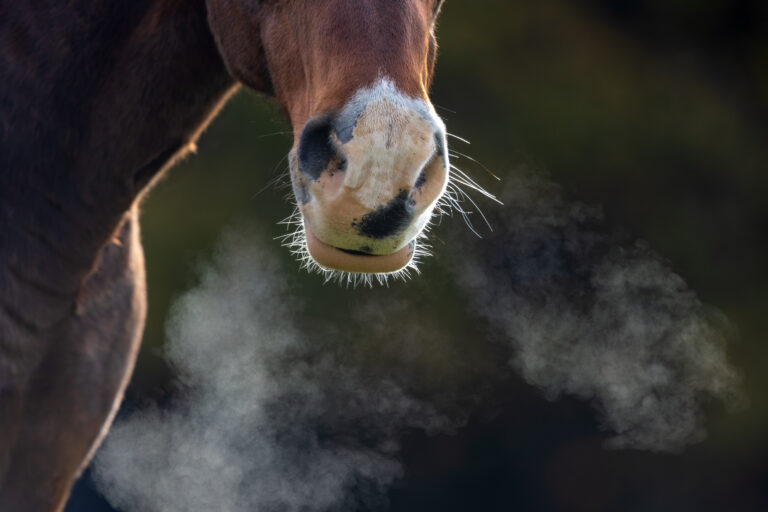
Congenital and juvenile cataracts in horses are amenable to surgery due to the advent of foldable synthetic intraocular lenses. However, surgery doesn’t guarantee horses will achieve normal vision. This is especially true for young horses—the implants are designed for mature horses, and the lens replacement’s dioptric power depends on the size of the globe. In addition, some cataract cases are caused by central visual pathways, which lens replacement does not impact.
Various breeds, including Morgans, Belgian Drafts, Quarter Horses, and Tennessee Walking Horses, are predisposed to congenital and juvenile cataracts due to an autosomal dominant inheritance pattern.
Study on Congenital and Juvenile Cataracts in Horses
In a collaborative retrospective study, researchers from the University of California, Davis (1990-2021), and Cornell University (2000-2022) evaluated electronic medical records of 101 horses younger than 5 years of age affected with primary congenital or juvenile cataracts.
Horses Included in the Study
Of the 101 study horses, 78 had bilateral cataracts, and 23 had unilateral cataracts. Of the 31 horses from Cornell, there were 10 (32.3%) Standardbreds, five (16.1%) Quarter Horses, three (9.7%) Morgans, three Thoroughbreds, two (6.5%) Appaloosas, and two mixed breeds. Of the 70 UC Davis horses with cataracts, there were 31 (44.3%) Quarter Horses, eight (11.4%) Arabians, five (7.1%) Paints, five Thoroughbreds, four (5.7%) Andalusians, three (4.3%) Standardbreds, two Friesians, Rocky Mountain Horses, miniature horses, and Quarter Horse crosses; and one Tennessee Walker, Appaloosa, Arabian cross, and Bashkir Curly-Missouri Fox Trotter cross. Compared with UC Davis’ general hospital population, Quarter Horses, Andalusians, Standardbreds, and Rocky Mountain Horses were overrepresented. There were no reported cataract cases in warmbloods despite them being 6.5% of the hospital population.
Affected Breeds
Standardbreds with cataracts comprised 32.5% of cases but only 10% of the equine hospital population at Cornell. At UC Davis, Standardbreds comprised 4.3% of cataract cases and 1.3% of the equine hospital population. In a different study, Quarter Horses were the most common breed receiving photofragmentation surgery (23/36 or 63.9%). All Rocky Mountain Horses with multiple congenital ocular abnormalities (MCOA) also had cataracts, which is part of their genetic disorder. Thoroughbreds did not have high numbers of cataracts at either equine hospital.
Potential Genetic Mechanisms
Because Standardbreds were overrepresented with cataracts at both equine hospitals relative to the overall hospital case load, the authors suggest further investigation can focus on potential genetic mechanisms for cataracts in this breed. Cataracts were present in both trotting and pacing lines, making pedigree evaluation relevant when investigating potential inheritance.
The only preventive measure to date for equine cataracts is to avoid breeding affected horses and avoid breeding a pair that produces an affected foal. It is valuable to perform a prebreeding ophthalmic exam to enable detection.
Reference
Plotsker NM, Bellone RR, Ledbetter EC, et al. Breed predispositions to congenital and juvenile cataracts in horses at two academic institutions. Equine Veterinary Journal Nov 2023; 10.1111/evj.14034









